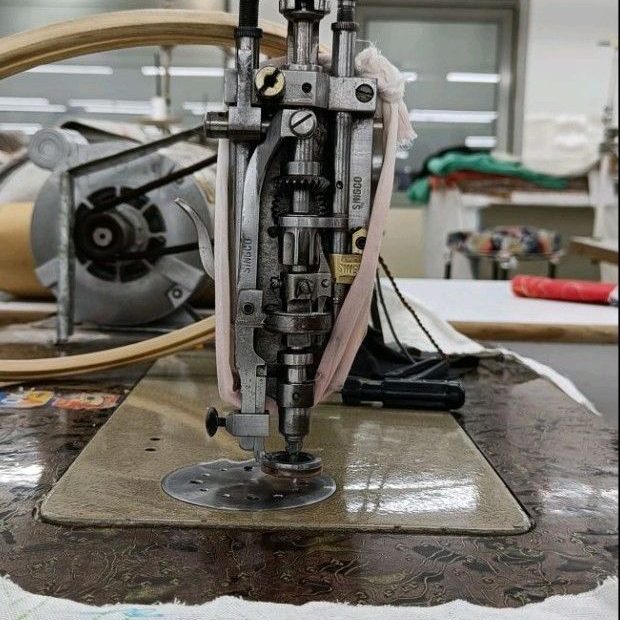- Your cart is empty
- Continue Shopping

Apparel Industry -An Overview of Garment
Initially, clothing was used to shield the human body from environmental conditions. Later on, as the wheels of time started spinning, new technology emerged and the manufacturing of fashionable garments came into existence. The apparel industry produces finished clothing such as kid’s garments, men’s and women’s clothing, and other intimate apparel.

Manufacturing Apparels is one of the most in-demand businesses today. Fads come and go, particularly in the fashion world. In order to remain competitive, apparel manufacturers seek to expand their business in various ways. Factors such as short product life cycles, volatile fashions, unpredictable market trends, and the impulse purchase nature of the customer are to be given utmost importance by the manufacturers so as to sustain themselves in the apparel segment. The apparel industry plays a pivotal role in developing a country’s economy in terms of revenue generation and creation of employment. The industry is undergoing a drastic change due to global sourcing and a high level of price competition. Favorable Demographic factors, a rise in disposable incomes, a change in consumer behavior, and a substantial shift towards branded apparel have resulted in positive growth in the global apparel market.
The revenue of the global apparel market was calculated at 1.53 trillion USD in 2022. However, the revenue forecast is 1.7 trillion USD in 2023.

Apparel Manufacturers Exports: Country-wise comparison Source: Statista 2023
China has almost 50% of the market share of the total apparel manufacturing from a global perspective followed by the European Union, Bangladesh, Vietnam, Turkey, India, Malaysia, Indonesia, and Hong Kong. While India At $41.3 billion in exports in 2021-2022, textiles and apparel constituted 9.79% of total goods exports. However, in 2022-2023, the segment recorded exports of $35.5 billion and constituted just 7.95% of goods exports.
Revolution in Garment Industry: Advancement in Cutting and Sewing

The garment industry is undergoing a transformation through advanced automation and technology, with robotics and AI playing a key role. These innovations are enhancing precision and efficiency in cutting and sewing processes. Benefits include improved quality, increased productivity, and reduced cost, making the industry more competitive.
The garment industry is currently experiencing a transformative shift, driven by advanced automation, artificial intelligence (AI), and robotics. These technological innovations are transitioning the traditional practices of the garment industry into a streamlined, efficient, and less labor-intensive operation.
In the realm of cutting and sewing – two pivotal areas in garment manufacturing – these advancements have been particularly noticeable. Cutting fabric has seen significant technological evolution. Advanced cutting machines are now at the forefront, ensuring precise and accurate fabric cuts. This precision not only reduces wastage but also conserves time. Robotic arms and advanced cutters, capable of slicing through multiple fabric layers simultaneously, have accelerated garment production rates.
The sewing domain, too, has seen the boon of technology. Modern sewing robots, capable of intricate stitching patterns, are emerging as industry game-changers. Their efficiency and cost-effectiveness are unmatched, as these machines can operate continuously, devoid of fatigue or error. Moreover, AI has carved out a crucial niche in the garment and textile manufacturing sectors. Systems empowered by AI sift through data, discern trends, and predict market demands. This predictive prowess enables manufacturers to produce garments with higher sale probabilities. Furthermore, AI optimizes production workflows, diminishing waste and bolstering the efficiency of manufacturing units. In essence, automation’s myriad advantages in garment manufacturing, as outlined in this article, underscore a promising future for the industry.
Conclusion:
The apparel industry represents a dynamic sector in global trade. The performance of Asia-Pacific regions like China, India, Hong Kong, Philippines, Indonesia, and Bangladesh in the apparel sector is astounding.. Despite the competition from China and India, Bangladesh’s performance is noticeable in the post-quota period. Philippines apparel exports have a good market in the USA.New business strategies are adopted by the apparel manufacturers to enhance trade. The industry is expected and estimated to grow in leaps and bounds and generate a considerable amount of revenue and employment from a global perspective.
The garment industry is currently undergoing a remarkable revolution driven by advancements in cutting and sewing technologies. The integration of robotics and artificial intelligence has brought significant change to the way clothing is manufactured, making the entire process faster, more efficient, and less reliant on manual labor. Automation has played a pivotal role in various facets of the garment production process. In cutting technology, sophisticated machines like auto-cutting machines, laser cutting machines, water jet cutting machines, and plasma cutting machines enhance precision, increase productivity, reduce waste, and save valuable time with better-quality cutting. On the sewing front, automation, and artificial intelligence have introduced innovations like robotic 3D sewing technology, industrial robots such as SEWBO and LOWRY SewBot, and automated machines for tasks like button attachment, pocket creation, belt loop attachment, and more. These technologies have not only reduced the reliance on human labor but have also significantly improved the speed and efficiency of garment production. The different benefits brought by automation include improved product quality, the ability to handle tasks beyond human capabilities, increased productivity, reduced variability among products, and enhanced inventory turnover. In summary, automation is reshaping the garment industry, making it more competitive and adaptive in a rapidly changing global marketplace. Looking ahead, there is great potential for further advancements in the global textile and garment industry.
